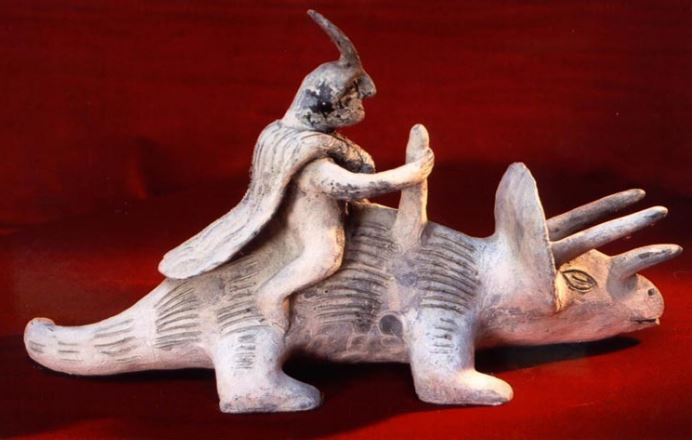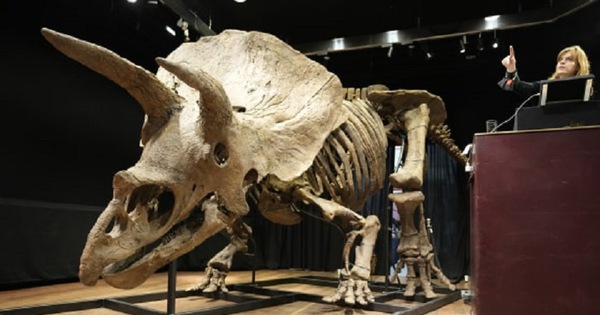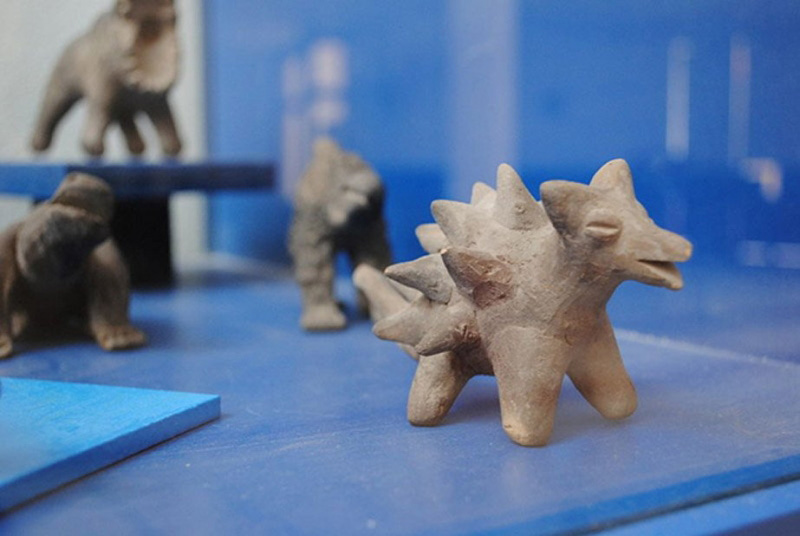The Acamparo Statues are a collection of more than 32,000 strange statues discovered in the municipality of Acambiro, Mexico. Amazingly, some of them depict humans coexisting with dinosaurs.

Controversial statue: This famous Acamparo statue depicts a person who appears to be riding a dinosaur. (Photo: Flickr)
Can humans coexist with dinosaurs in the past? Orthodox scholars believe that dinosaurs ruled the Earth between 220 million and 65 million years before the Mesozoic Era.
Humanity is believed to have appeared on Earth around 200,000 years ago. However, while the majority of scientists accept this hypothesis, there are still countless mysterious discoveries that prove the history of the appearance of humans at different time points, one of which is prove that humans and dinosaurs co-existed in the past.
One of the most interesting examples is the strange Acombaro statues.

In 1944, Waldemar Julsrud, a German merchant, made a discovery in Acambaro, a small town about 300 km northwest of Mexico, in the province of Guanajuato.
While he was riding with his servant, a farmer named Odilon Tinajero, he was suddenly drawn to a piece of pottery protruding from the ground. It was a terracotta statue unlike any he had seen in the past.

Julsrud ordered Tinajero to dig it up and bring back all the similar pieces he found there. A few days later, Tinajero found dozens more strange artifacts.
Julsrud was stunned by the shape and variety of the figurines. He made an agreement with his servant: he would pay Tinajero 1 Peso (about 1000 VND) for each artifact intact and nothing for the broken statues, although he had to be very hard to manually dig all of them.
He wanted to prevent anyone from falsifying those statues.
The statues were discovered in a set of 20 to 40 pieces inside wells about 2 meters below ground.
According to Julsrud’s theory, it seems that these artifacts were hastily buried to avoid being robbed by Spanish colonists.
More than 33,500 artifacts mainly made of ceramics, stones, jade and Opxidian stones have been found.
All of them are very unique and not duplicated.

Their size ranges from a few centimeters to less than a meter.
Some are made of clay, and all of them are made by firing.
According to Dr. Cabrera, curator of the ancient Ica stone statues, Julsrud never did business with these artifacts. His main purpose is to use them for scientific research, and he wishes to protect these heritage sites, which he believes are unique to humanity.
Mr. Julsrud is happy to let anyone see the statues if they are interested and want to learn about them, however, the scientific community still refuses to accept the statues as authentic because of the strange shape. of them. Among the statues are many other statues that are not clear such as: Dinosaurs, unidentified animals, reptiles, some of which appear to be poultry.
Interestingly, there are figurines that appear to be some form of domesticated reptiles and dinosaurs, some are giant monkeys, and many others appear to be representations of gods. .
Most people think it’s impossible. How can humans and dinosaurs coexist?
However, not everyone thinks so. There was a researcher who was very interested in these statues. He is Charles Hapgood, a professor of history and anthropology at the University of New Hampshire.
He went to Julsrud to find and study the statues. He brought a few samples back for analysis using the most modern and up-to-date methods at the time (around the late 60s).

One of the other statues in the collection. (Image: Wikipedia)
In 1968, New Jersey’s Carbon 14 dating method showed that the statue was created between 1100 and 4500 BC.
In 1972, by photothermal methods at the University of Pennsylvania, two figurines of which were identified were created around 2500 BC.
According to mainstream scholars, all dinosaurs disappeared around 65 million years ago. But why did all the dinosaurs disappear from our planet while other species were able to survive?
If we look back at history, we will see that humans have discovered the existence of dinosaurs just over 2 centuries.
Therefore, it is logically impossible for humans to live from 3000, 4500 or even 6500 years to be able to describe and produce statues of this animal.
This is why many discoveries like the Acamparo statues are rejected, even though the evidence suggests otherwise, perhaps because these discoveries are inconsistent with known history. now.
In 1954, the Mexican government sent a team of archaeologists, led by Dr. Eduardo Noguerain, to investigate the location where Julsrud had excavated and at another site they had discovered other figurines. .
They confirmed the authenticity of the location where Julsrud had unearthed the statues, and said it was an amazing discovery by Julsrud. However, three weeks later, in their report, they denied the authenticity of the statues because they had dinosaur characteristics.
So are the statues authentic or not?
In 1952, archaeologist Charles DiPeso, along with the Arizona Indian tribes, visited this area of Arizona, observing excavation workers and studying his unearthed archeology. According to DiPeso, the research data shows evidence that the artifacts were created recently, and do not see the usual features of artifacts that have been buried for thousands of years.
If they were to be authentic, the artifacts would have had scratches and debris like the rest of the artifacts found by Julsrud in Mexico.
Some archaeologists have dared to come forward, and suggest that if the Acamparo statues are authentic, they may actually represent non-lizard animals, or possibly monsters. “mythical” animals, not dinosaurs as many people have identified.
Although it is not possible to pinpoint whether humanity co-existed in the distant past with the dinosaurs, the discovery of the Acamparo statues remains a mystery even if they are not inherited. accepted by mainstream scholars.








